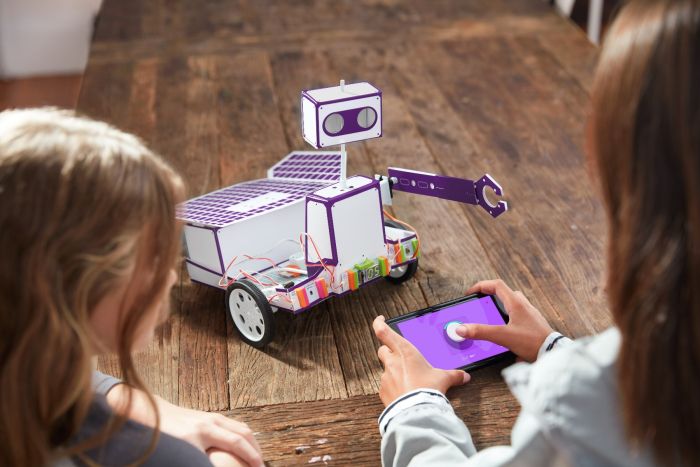It’s no big secret that kids love to create. Hands-on activities provide a wonderful way to engage children and teach them important lessons they’ll remember long-term. This concept has inspired the fast-growing “maker movement” — a trend of do-it-yourself activities for children that involve learning, building, and experimentation.
Robotics is one of the most popular examples of the maker movement. Kids and adults alike are enamored with robots; creating an object from scratch and learning to control its actions is just plain cool. But there’s more: the fundamentals of robotics are directly connected to important STEM skills. It’s not just fun, it turns out; it’s educational.
Mathematics in robotics
Beyond the basics, mathematical concepts can be difficult to grasp. What’s more, they can be even more difficult to apply. Robotics is changing that. Building a robot is a visual way to show how numbers on a page relate to construction, movement and other real-life applications. From simple addition and subtraction to more advanced geometry, robotics brings math to life in front of children’s eyes.
Science in robotics
Scientific concepts and robotics go hand-in-hand. Adding an electrical element to robots helps kids learn scientific theories about solar power and photovoltaics. Creating a robot that can move, lift or draw incorporates important physics concepts. Learning what materials work best for construction helps kids discover force and tension in a problem-solving environment that encourages engineering ingenuity.
Technology in robotics
Computer programming is increasingly accessible to younger generations. However, the abstract codes and programs on a screen can be difficult to conceptualize. Robotics shows how the programming blocks translate. Kids can use basic programming languages to manipulate robots to move and complete different actions. As the child’s abilities grow, so too can the complexity of the programming and actions of the robot. With the anticipated growth of computer engineering jobs in the future, this is one hobby that might just pay off (literally) years down the road.
How can you start your kids in robotics?
There are many ways to expose your kids to robotics classes and become a part of the maker movement. Schools throughout the nation offer robotics clubs where students can join and work on projects in a group setting. Another option is to order a kit online that you and your child can work on together. Of course, one of the best ways to get a taste for the thrill of robotics is to sign up for a Bricks 4 Kidz robotics class. Age-appropriate classes are designed for students who want to build unique robots in a positive, STEM-centered environment.

Discover more math tools and robots with RobotLAB!
Discover our STEM products and engage your students with robots!
Download 2022 Product Catalog Now
original article by Bricks4 Kidz: https://www.bricks4kidz.com/blog/how-can-robots-teach-children-about-math-and-science/
